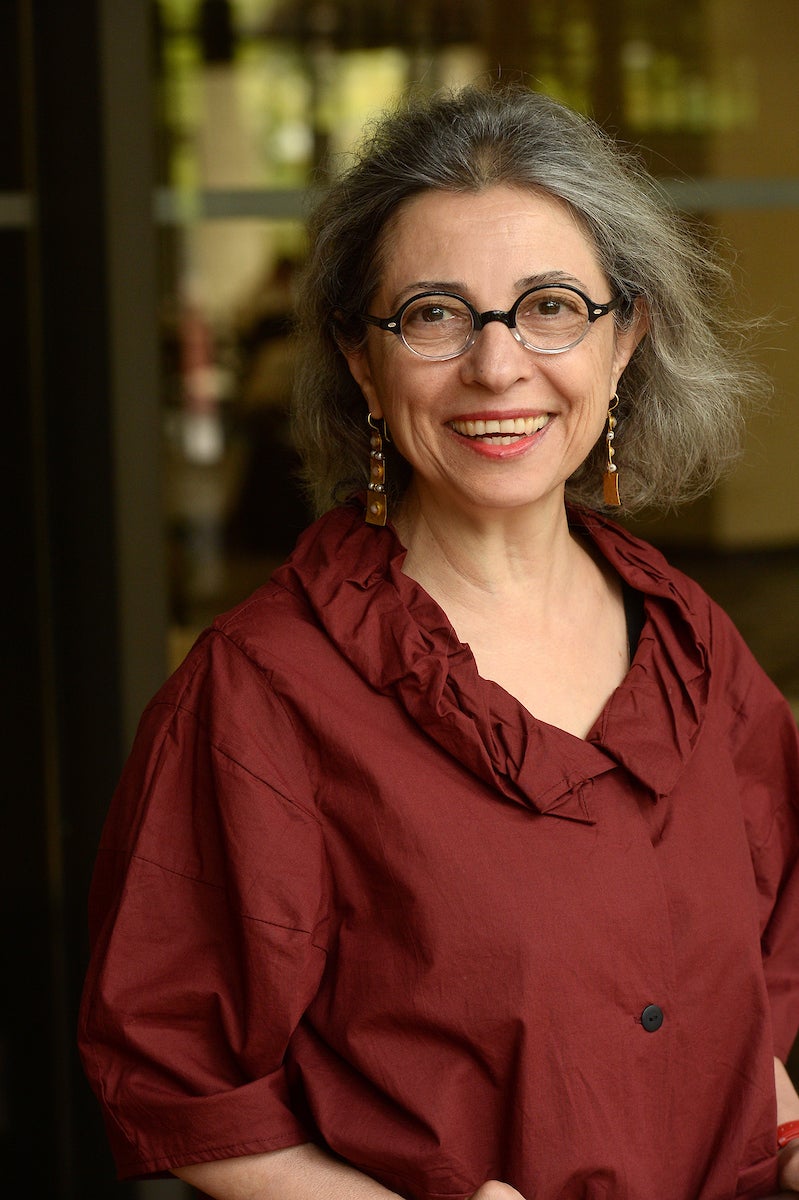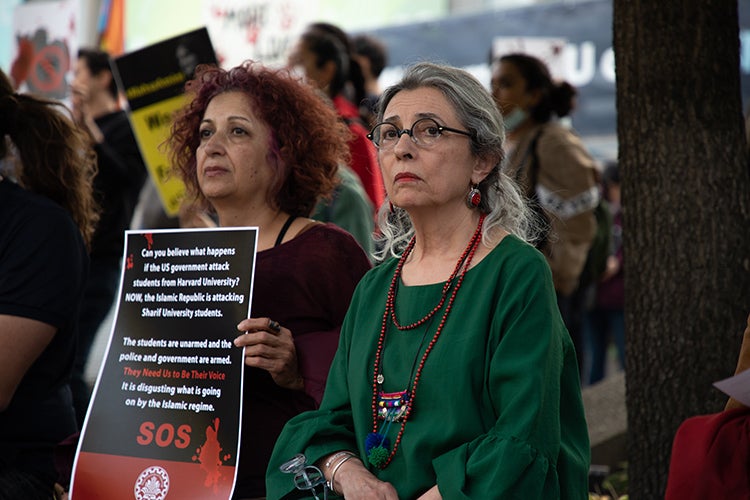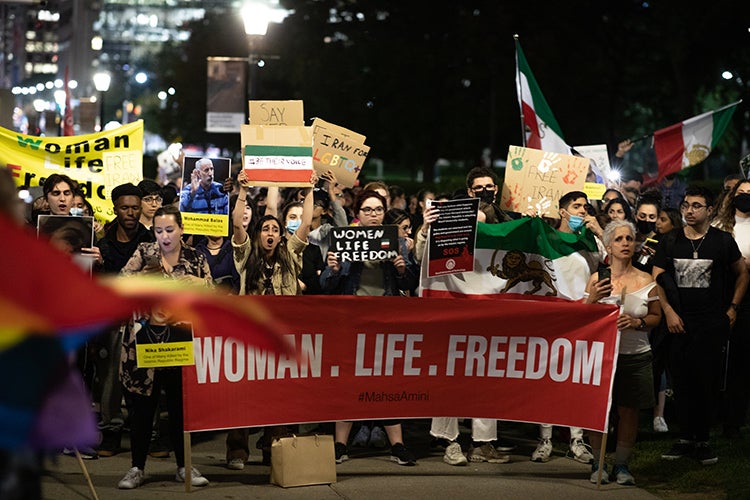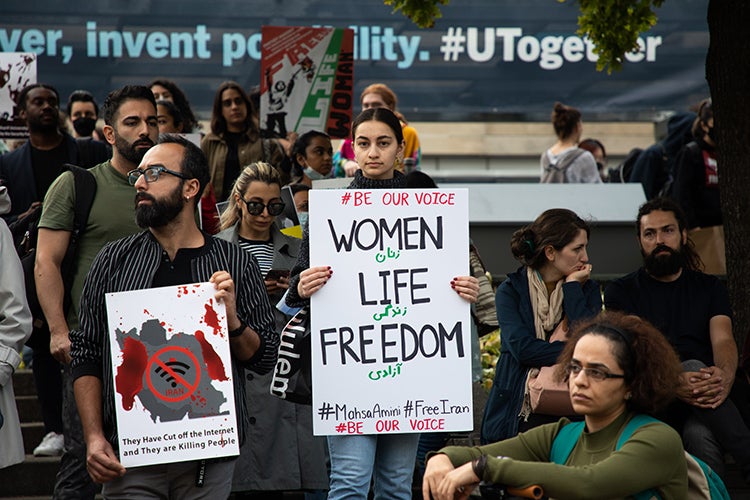‘The entire country is on fire’: U of T’s Shahrzad Mojab on the uprising in Iran following Mahsa Jina Amini’s death

Published: October 7, 2022
The tragic death of Mahsa (Jina) Amini in police custody has sparked protests in Iran and globally over suppression of women’s rights and state violence.
Shahrzad Mojab, professor in the department of leadership, higher and adult education at the Ontario Institute for Studies in Education and acting director of the Women & Gender Studies Institute, says the uprising is unique because of the way it has brought Iranians together.
 Shahrzad Mojab
Shahrzad Mojab
“The unity of the people is remarkable in terms of demanding, ‘Let’s stay in the streets and be united in our struggle,’” she said.
There has been an outpouring of support in Canada and around the world. At the University of Toronto, there have been rallies, an online discussion and a vigil, among other demonstrations of support. President Meric Gertler and Vice-President, People Strategy, Equity and Culture Kelly Hannah-Moffat have both issued statements condemning policy brutality in Iran, the violation of human rights and systemic violations of the rights of women – and expressing solidarity with those speaking out.
President Gertler’s statement also addressed reports in recent days of police action against student protesters on university campuses in Iran, and the special concerns this raises for U of T and all institutions founded on academic freedom and freedom of expression. Universities Canada, which is chaired by President Gertler, has also released a statement expressing its concern.
As for Mojab, she spoke at a rally Thursday evening that began at U of T’s Sidney Smith Commons on the St. George campus and ended at Queen’s Park.
Mojab participated in the women’s movement, the Kurdish autonomous movement and in the student protests in Iran more than 40 years ago, and was forced to leave Iran in 1983 due to her political activism.
U of T News spoke with her about Amini, the massive uprising in Iran and what it means for the future of the country.
Who was Mahsa Amini?
Mahsa (Jina) Amini was a 22-year-old Kurdish woman who was travelling to Tehran for a family vacation. She was detained by the morality police because they claim she wore her veil improperly. She was confronted, arrested and then taken to a detention centre to be “re-educated” in terms of morality, Islamic codes and proper dressing. She was beaten under custody and she was transferred to hospital where she passed away a few days later.
The compulsory veiling law was enforced by the Islamic regime since it came into power. This has been the cornerstone of the Islamic identity of this government. The compulsory veiling law is part of the Islamic Constitution, which is based on Sharia law.
It has been brutally enforced for more than four decades with many implications. It is a massive suppression of freedom of expression, academic freedom, censoring publications and different forms of art production. It is a suppression of women’s rights, control of women’s sexuality and their reproductive rights – all of that is enshrined in the constitution of Iran.

Shahrzad Mojab spoke at a rally on the St. George campus this week (photo by Polina Teif)
Why did Amini’s death fuel such a strong response among Iranian youth, particularly women?
People got very angry for several reasons.
The first is that Mahsa’s family made it public knowledge that this had happened to their daughter. They didn't keep it a secret. This daring act on behalf of the family really exposed the larger machinery of violence of this state. How are women treated? What happens at the time of the arrest? And where do they get taken? There’s been much media and footage that have exposed the machinery of this violence.
Second, Mahsa is a Kurdish woman – a member of a national minority that has been culturally, economically and politically suppressed. Those factors, combined with gender oppression, were a force that ignited this massive uprising.
The third reason is that, in the last few years, the government has escalated its suppression of freedom ideas by arresting women, human rights activists, environmental activists, members of workers unions, teachers, writers and artists. Just a few months ago, the death of a very beloved poet, writer and filmmaker – Baktash Abtin – affected many people.
The last reason, which is hugely significant, is the economic condition in the country. The high inflation, lack of employment, the rise of poverty and class division has also contributed to the frustration and grievances of the people. All of this has hugely affected the anger of the people in terms of Mahsa’s death being viewed as the last straw.

Hundreds marched from Sidney Smith Hall on the St. George campus to Queen's Park (Photo by Polina Teif)
Why have the protests have spread worldwide and what does the show of solidarity mean?
Over the last four decades, we’ve had suppression of women’s rights with the compulsory veiling law, followed by military aggression against the Kurds, followed by the massacre of political prisoners, the suppression of the student movements – it has been relentless. The international community kept quiet. Now, this silence is broken. It is broken because the leading force in this movement are youth and women. There is such an incredible unity across the country that it's hard not to be moved by this.
People across the world saw the connection between the knee of the white police officer on George Floyd and the brutality of Islamic police in Iran. They could see it’s state violence, it’s structural forces that are strangling people.
People on the streets everywhere are responding to national oppression and women’s oppression. They can see the relationship between banning of abortion in the U.S. and the rise of right-wing fascism in Europe. They see themselves in it, they see that it is coming to them – that is this level of political, cultural and economic violence.
I think it’s incredible to see this beautiful solidarity in Latin America, the entire Middle East, Europe and North America.
Has Iran seen anything like this wave of protests before?
Iran has observed many, many uprisings in different places at different times.
However, this is unique in terms of the unity that it has created across the country. It’s unique in the sense that it involves students, workers, teachers, nurses – all professions are involved. People in rural areas, urban areas, small cities are getting involved. It’s incredible. The entire country is on fire. The protests are creative, united and peaceful. The Islamic state is trying to impose its violence to freedom seeking protestors.

Neeki Alavi, a medical sciences student, says “It’s really important for Iranian people to be represented around the world right now” (photo by Polina Teif)
What are the stakes here? What happens next for the regime, for the protestors?
It is a very difficult situation. People are standing up in a peaceful, democratic way of expressing their rights. In front of them is a militarized, secularized, brutal regime that is committed to suppressing people. The government is using their old rhetoric of this being interference by the West.
It’s all the rhetoric that people are sick and tired of hearing. They know these are lies. So, what we are seeing is that this is a faceoff. It's an extremely dangerous faceoff. I don't know what is going to happen.
As of Oct. 5, I know that university students are on a strike. They are occupying campuses and there are different calls for a general strike. The unity of the people is remarkable in terms of saying: “Let’s fight this. Let’s stay on the streets and be united in our struggle. They say, “This is not a protest, this is a revolution.”



